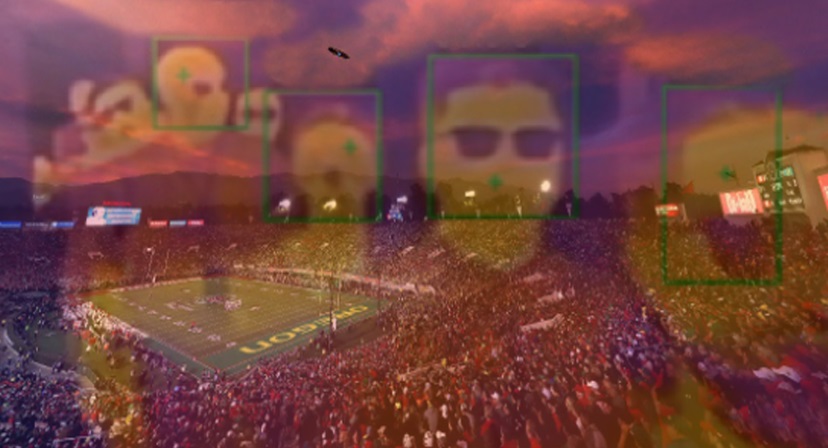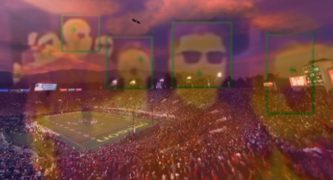
On Monday, Rose Bowl Chief Operating Officer George Cunningham, told Pasadena Now the iconic stadium has been using the software and cameras at metal detectors for the past three years.
Cunningham said the software allows the stadium to keep track of credentialed personnel and VIPs at the stadium, but also gives the stadium an extra level of security.
“If we have an artist or an athlete or an event and they say, I have some stalkers, and I have some restraining orders on some individuals that are very highly likely going to be attending the event and potentially create a concerning situation, we upload those individuals photos, if we have a photo of them in our software, and then our cameras communicate to us, if, and or when that individual passes by one of our cameras,” Cunningham said.
The software only allows the stadium to track uploaded images and is not scanning faces and date about everyone that walks by the cameras.
Activists have long claimed that facial recognition software could be abused and images placed in database without people being notified.
However, more stadiums are using the software to track unruly fans banned from stadiums.
Danish club Brondby IF installed security cameras and software last year at its stadium on the outskirts of Copenhagen. The club uses the system to spot banned fans from a blacklist of about 50 to 100 people each game in a crowd that can reach 25,000.
Locally, in 2018, facial recognition software was used during a Taylor Swift concert at the Rose Bowl by an outside company. Cameras were hidden in a display kiosk showing videos of Swift’s rehearsals. Images of the faces of the concert-goers in the kiosk were sent to a facility in Nashville, where they were cross-referenced with a database containing images of Swift’s stalkers.
Local police said they did not receive copies of photos or footage from the Taylor Swift concert.
“It doesn’t store your image,” Cunningham said. “The software only recognizes individuals it’s told to recognize.”
On Sunday, a company revealed that software was used during the Rose Bowl Game for marketing purposes.
In that event, media reports claimed more than 30,000 fans who attended the game were being watched before they even got to their seats because their features were captured by facial-recognition software from an outside company.
Cunnigham said it was simply about marketing demographics.
“It allows our marketing division to go back to the sponsors that are advertising at our venue and say where we are really drilling into an area for you, this is why it’s important for you to keep sponsoring and, or even increase our value of that sponsorship,” Cunningham said.
But the systems can be easily used to violate privacy and civil rights.
In 2012 the San Diego Association of Governments allowed law enforcement to use Tactical Identification System software. The software focuses on unique textures and facial patterns, including ear shape, hair, skin color—using the distance between the eyes as a baseline.
The software compares that data to a database containing 1.8 million images collected by the San Diego County Sheriff’s office.
There were no public hearings or public hearings on the software.
In Carlsbad, city officials falsely claimed that the city did not use facial recognition software when, in fact, that department had been part of a regional face recognition pilot program for a number of years. All told, 14 Carlsbad officers were using special smartphones that capture faces and match them against the county’s mug shot database.
City officials could not produce policies or guidelines for the use of the devices, and had no record of how many times the devices were used. The only information they had was the user’s manual for the device.
Several agencies have banned law enforcement agencies from using their databases in facial recognition software, including the state’s Department of Motor Vehicles.
“Would I feel comfortable if my face was taken every single time and stored and all that kind of stuff, probably not,” Cunningham said. “And that’s not what we are intending to do at the Rose Bowl. We’re looking for somebody that potentially could be a threat to the 95 percent of the other patrons coming to this event. We need to keep a lookout. If that individual is going to show up, we’re able to respond before it becomes a worst scenario. That’s ultimately what we’re trying to do, create a safe environment for everybody.”














 3 comments
3 comments


